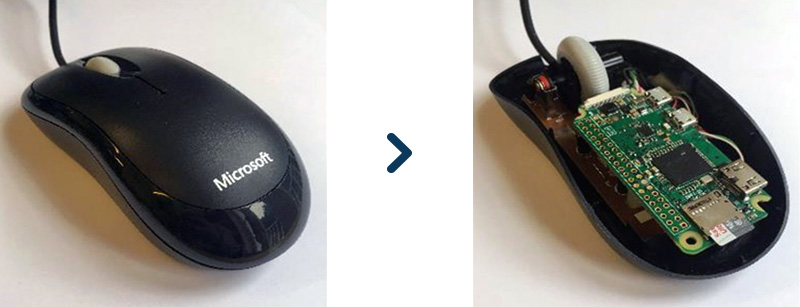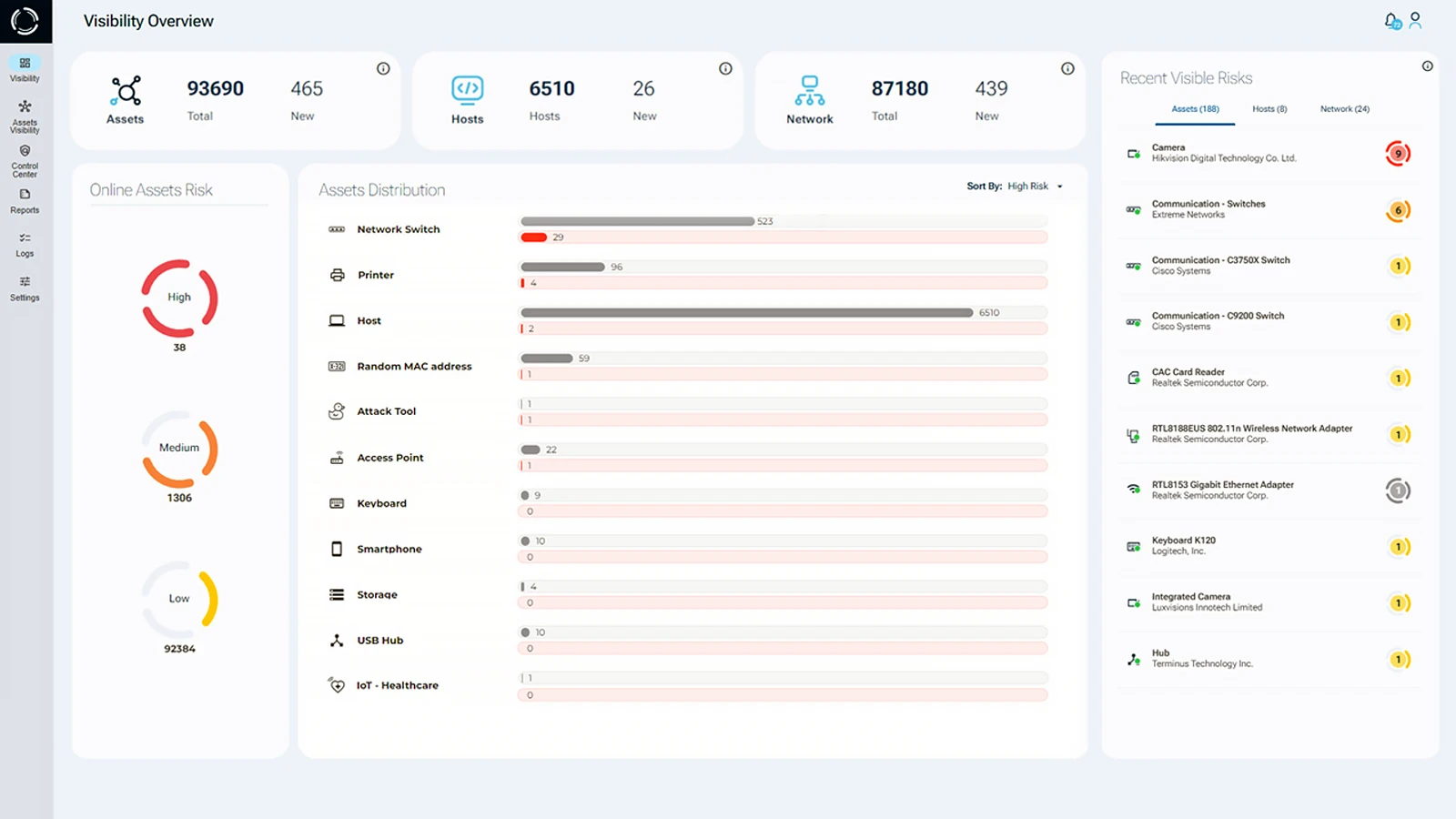What are Hardware Attacks?
Hardware attacks are among the most underestimated cybersecurity threats. Malicious actors exploit vulnerabilities in hardware to bypass traditional security measures such as Network Access Control (NAC) solutions, Endpoint Detection and Response (EDR), Intrusion Detection Systems (IDS), and other network security tools. These attacks often involve rogue hardware disguised as everyday items, such as USB drives, chargers, or peripherals, allowing attackers to infiltrate computer networks undetected.
Most security policies prioritize monitoring software activity and network traffic, but often overlook physical device threats, creating a critical blind spot that allows hardware-based cyberattacks to operate undetected beneath traditional defenses. This poses significant risks to organizations unprepared for evolving data security challenges. Recognizing and mitigating hardware threats by deploying hardware cyber security solutions designed to detect rogue devices is crucial for maintaining a strong enterprise security posture.
The Impact of Hardware Attacks in Cybersecurity
Humans remain the weakest link in computer security, particularly when it comes to cyber security threats. Negligent insiders are responsible for 62% of all incidents according to a study by Proofpoint, and pose an even greater risk due to the lack of awareness and education in this domain. Employees often attach peripherals to their devices without considering data security risks, exposing them to potential phishing attempts, hacking incidents, or other forms of cybercrime.
The deceptive appearance of rogue devices exploits this vulnerability, as these hardware attack tools are often designed to evade suspicion or are discreetly embedded within other devices. As a result, identifying them as malicious or unauthorized becomes extremely difficult without specialized detection tools, as they often appear harmless to the naked eye.

Hardware Attacks Through Everyday Devices
Attackers can embed malicious hardware attack tools within a seemingly harmless mouse or keyboard, exploiting network hardware security vulnerabilities. A Raspberry Pi, a small single-board computer, is compact enough to be hidden inside one of these HIDs, making detection by users nearly impossible. Despite not being designed for such purposes, a Raspberry Pi can act as a powerful hacking tool, capable of stealing data, performing network packet sniffing, and carrying out cyberattacks like man-in-the-middle (MiTM) schemes.
For instance, a USB attack tool impersonating a legitimate Microsoft mouse can inject keystrokes, execute code, and initiate security breaches. Such hardware-based threats are a growing concern, emphasizing the need for advanced hardware cyber security solutions that can detect and block rogue devices before damage is done.

Using an iPhone Charger as an Attack Tool
The “NinjaCable” is a USB attack tool that looks exactly like a USB iPhone charger yet causes significant damage to the victim. The concept of the NinjaCable is not novel. Its design is based on a tool once used by the NSA called COTTONMOUTH. With the NinjaCable, hackers can easily exploit human trust, as the device functions like a normal charger while launching cyberattacks such as ransomware injection or data exfiltration in the background.
First, no one questions the legitimacy of an iPhone charger. If your phone dies at the office, you’re likely to grab the nearest charger without a second thought, rarely stopping to consider whether it could be a harmful hardware attack tool. Second, because smartphones are constantly connected to our work and personal lives, attackers can target victims from virtually anywhere, greatly expanding the attack surface. Instead of sneaking a NinjaCable into a secured environment, attackers can exploit public charging kiosks.
At these stations, users often plug in their phones in a rush, focused only on getting a charge. This tactic, known as “juice jacking”, allows cybercriminals to access sensitive personal or work-related data stored on the device. As mobile connectivity continues to blur the lines between personal and enterprise environments, the threat posed by disguised hardware grows ever more dangerous.
The Threat of Malicious USB Thumb Drives
One common method of hardware-based cyberattacks involves the use of malicious USB thumb drives. But how can you tell the difference between a standard USB drive and a harmful one? The answer is: you can’t.
For example, a USB drive disguised as a Best Buy gift was mailed to a hospitality company. It looked completely ordinary but was, in fact, a malicious device loaded with malware. Tools like the Rubber Ducky resemble standard USB thumb drives, yet they’ve been engineered to execute keystroke injection attacks, install malware, or execute malicious scripts the moment they are plugged into a computer.
Hardware Attack Tools are Invisible
The inconspicuous appearance of rogue devices makes them even more dangerous as hardware attack tools. In addition to operating below the radar of existing firewall and intrusion-detection solutions, rogue devices bypass any possible human form of authentication. Once connected, they can grant attackers unrestricted access to an organization’s systems.
Even the most advanced cybersecurity frameworks, such as Zero Trust Architectures, are often ineffective at defending against hardware-based threats. These attacks exploit a foundational gap: Zero Trust assumes identity and behavior can be verified, but rogue hardware can spoof identities and act without triggering suspicion.
The discreet nature of rogue devices enables them to move laterally across an organization, effectively undermining Zero Trust principles like microsegmentation and least privilege access. These tools raise no suspicion to the human eye, evade detection by legacy security software, and can execute a wide range of malicious activities.
But if you think all hope is lost, think again. Specialized solutions do exist to defend against these threats. While no system is entirely invulnerable, proactive, cyber security hardware measures can significantly strengthen your organization’s defensive posture and close the gap traditional tools leave behind.
Hardware Cyber Security
Sepio has developed a solution to provide a panacea to the gap in device visibility through physical layer fingerprinting. As the leader in Rogue Device Mitigation (RDM), Sepio identifies, detects, and handles all peripherals. No device goes unmanaged.

Moreover, Sepio’s policy enforcement mechanism and Rogue Device Mitigation capabilities instantly block unauthorized devices involved in hardware attacks. This approach minimizes the risks associated with human error, relieving organizations of the ongoing challenge of monitoring connected network assets and peripherals. Even the most vigilant employees can struggle to identify these threats, making automated protection essential.
Additionally, Sepio’s deep visibility capabilities and integration with existing tools, such as NAC, EPS, and SIEM, ensure that organizations maximize their information-security investments. As a result, with Sepio, clients benefit from a Zero Trust Hardware Architecture (ZTA) approach.
Network and Endpoint Hardware Security
Sepio doesn’t probe network traffic or use any discovery protocols, ensuring that the system does not monitor proprietary data. This makes deployment quick and easy. In just 24 hours, we reduce the threat of employee negligence and enhance your enterprise’s overall security posture. While employees are an organization’s greatest asset, they also represent a significant risk. Let us help you minimize that risk.Let Sepio’s cyber security hardware solution help you reduce that risk.

Secure your organization against rogue devices with Sepio’s patented technology. Schedule a demo to see how we enhance your cyber security hardware protections.






